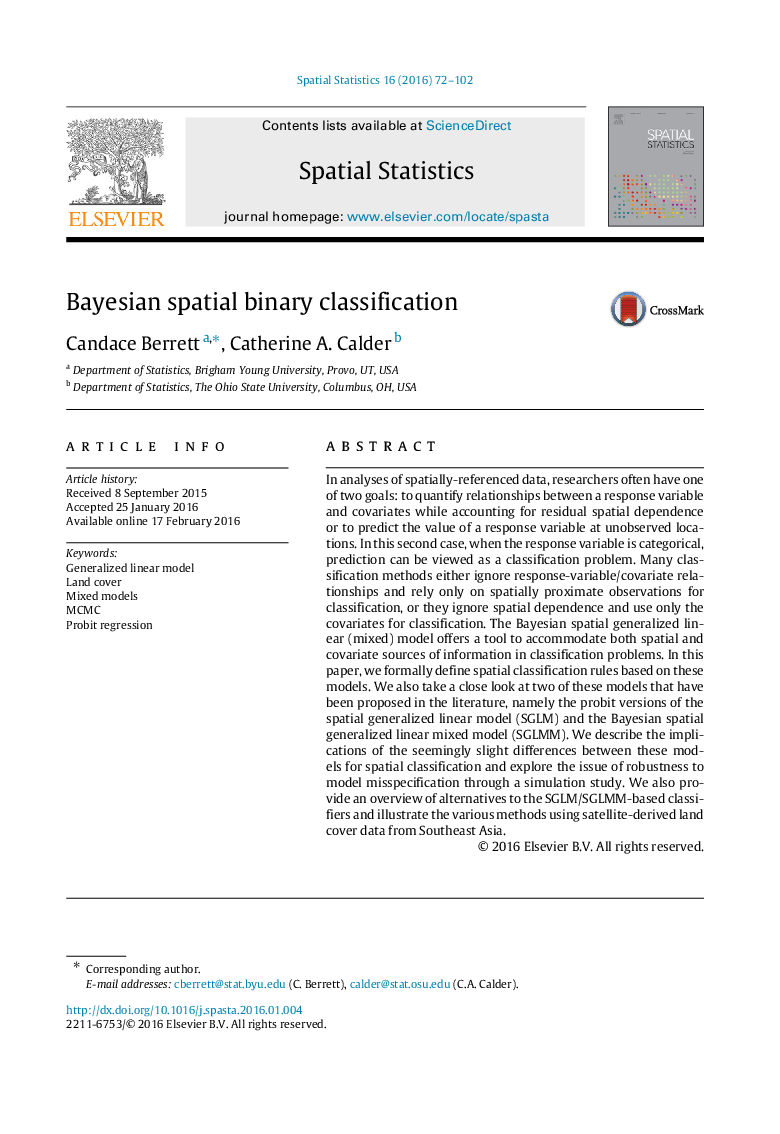| Article ID | Journal | Published Year | Pages | File Type |
|---|---|---|---|---|
| 1064507 | Spatial Statistics | 2016 | 31 Pages |
In analyses of spatially-referenced data, researchers often have one of two goals: to quantify relationships between a response variable and covariates while accounting for residual spatial dependence or to predict the value of a response variable at unobserved locations. In this second case, when the response variable is categorical, prediction can be viewed as a classification problem. Many classification methods either ignore response-variable/covariate relationships and rely only on spatially proximate observations for classification, or they ignore spatial dependence and use only the covariates for classification. The Bayesian spatial generalized linear (mixed) model offers a tool to accommodate both spatial and covariate sources of information in classification problems. In this paper, we formally define spatial classification rules based on these models. We also take a close look at two of these models that have been proposed in the literature, namely the probit versions of the spatial generalized linear model (SGLM) and the Bayesian spatial generalized linear mixed model (SGLMM). We describe the implications of the seemingly slight differences between these models for spatial classification and explore the issue of robustness to model misspecification through a simulation study. We also provide an overview of alternatives to the SGLM/SGLMM-based classifiers and illustrate the various methods using satellite-derived land cover data from Southeast Asia.
